calsfoundation@cals.org
Columbia County
| Region: | Southwest |
| County Seat: | Magnolia |
| Established: | December 17, 1852 |
| Parent Counties: | Lafayette, Hempstead, Ouachita, Union |
| Population: | 22,801 (2020 Census) |
| Area: | 766.06 square miles (2020 Census) |
| Historical Population as per the U.S. Census: | |||||||||
| 1810 | 1820 | 1830 | 1840 | 1850 | 1860 | 1870 | 1880 | 1890 | 1900 |
| – | – | – | – | – | 12,449 | 11,397 | 14,090 | 19,893 | 22,077 |
| 1910 | 1920 | 1930 | 1940 | 1950 | 1960 | 1970 | 1980 | 1990 | 2000 |
| 23,820 | 27,670 | 27,320 | 29,822 | 28,770 | 26,400 | 25,952 | 26,644 | 25,691 | 25,603 |
| 2010 | 2020 | ||||||||
| 24,552 | 22,801 | ||||||||
| Population Characteristics as per the 2020 U.S. Census: | ||
| White |
13,371 |
58.6% |
| African American |
7,866 |
34.5% |
| American Indian |
74 |
0.3% |
| Asian |
168 |
0.7% |
| Native Hawaiian or Other Pacific Islander |
0 |
0.0% |
| Some Other Race |
481 |
2.1% |
| Two or More Races |
841 |
3.7% |
| Hispanic Origin (may be of any race) |
773 |
3.4% |
| Population Density |
29.8 people per square mile |
|
| Median Household Income (2019) |
$36,193 |
|
| Per Capita Income(2015–2019) |
$21,189 |
|
| Percent of Population below Poverty Line (2019) |
25.0% |
|
Natural resources have been the mainstay of the Columbia County economy, from cotton in the nineteenth century; timber, oil, and gas in the mid-twentieth century; and later bromine. The county’s fortunes have also been closely tied to the evolution of Southern Arkansas University (SAU). Columbia County, named after the female personification of America, wielded significant political influence in Arkansas during the first half of the twentieth century, with family and business ties to governors Thomas McRae, Sidney McMath, and Ben T. Laney, Lieutenant Governor Lawrence E. Wilson, State Auditor T. C. Monroe, U.S. representatives Robert Minor Wallace and Wade Kitchens, and businessman Harvey Couch. Columbia County is typified geographically by low, rolling hills and is heavily forested.
Pre-European Exploration through Early Statehood
The first inhabitants of Columbia County were Native Americans. They found abundant game in the heavily wooded land drained by the Dorcheat Bayou to the west and Cornie Creek to the east. The prehistoric Caddo were the last original Indian residents of the region.
Early white settlers began arriving in significant numbers to the area only after Arkansas achieved statehood in 1836, forming small communities including Spotville, Atlanta, Calhoun, and Lamartine. Columbia County was created from portions of Lafayette, Hempstead, Ouachita, and Union counties in 1852. The county seat, Magnolia, was incorporated in 1855.
The early residents depended on an agricultural economy with cotton, and to a lesser extent corn, as a cash crop. Some settlers brought slaves. Early tax records indicate that in 1854, Columbia County had 1,675 slaves in a population of almost 6,000. The first formal federal census of the county in 1860 showed a population of 12,449, of whom 3,599 were enslaved. With twenty-nine percent of the population enslaved that year, the county produced just under 14,000 bales of cotton, demonstrating how reliant Columbia County’s economy was on the institution of slavery. About 1,000 farms were in operation at that time.
Civil War through the Gilded Age
Columbia County played no significant role in the Civil War, although about 1,000 men did serve in the Confederate ranks. A company of militia from the county participated in the Battle of Wilson’s Creek as part of the Fifth Regiment of Arkansas State Troops. Thomas Dockery commanded the regiment during the battle and later became a colonel in the Confederate army before ending his service as a brigadier general. The Dockery family were large landowners before the war, owning a total of forty-five enslaved people before with war, with Dockery personally owning eight. A hospital for Confederate soldiers operated in Magnolia late in the war. It is estimated that about a third of the men never returned from the war. Of historical interest are the twenty-five graves of unknown Confederate soldiers, together in a section of Magnolia Cemetery. Buried nearby is Confederate Major General John Porter McCown, who retired to Columbia County following the war.
Relative isolation and transportation difficulties have long been a problem for Columbia County. Columbia is the only one of Arkansas’s seventy-five counties not situated on a river. The county’s creeks and bayous were more of an impediment than an aid to early travelers because they were too narrow and shallow to support water traffic. The swampy conditions of the upper Dorcheat Bayou in Columbia County did not allow for practical use by boats. Rain made travel conditions worse. Only the arrival of railroads made it possible for Columbia Countians to enjoy a dependable, year-round transportation option.
Plans made prior to the Civil War for the construction of a rail line fell through, and it was not until the construction of the St. Louis, Arkansas and Texas Railroad in the fall of 1882 that the first cotton was shipped from the county by railcar. The railroad led to the creation of the communities of McNeill (later McNeil) and later Waldo, which were incorporated in 1884 and 1888, respectively. Cut off from the planned railroad, civic leaders in Magnolia resolved to have a spur line built to the city. They pledged $6,000 in cash and property during a single meeting in 1881 and eventually raised more than $20,000 toward this goal. The branch was completed in 1883.
Growth of railroads was also responsible for the creation of two Columbia County communities that remain incorporated today: Emerson and Taylor. The Louisiana and North West Railroad was built between Magnolia and points in Louisiana in 1899. The town of Emerson in the southeastern part of the county was created and later incorporated in 1905. There was a post office in Taylor years before the Louisiana and Arkansas Railroad was built through the southwestern portion of the county in the 1880s. The town was incorporated in 1913.
At least three incidents of racial violence were recorded in the county in the late nineteenth and early twentieth centuries. Henry Capus was killed in 1894 for allegedly attempting to rape several white women. Initially whipped for allegedly attempting to rape a woman, Lee Newton was hanged by a lynch mob after attempting to flee to Louisiana in 1902. Jordan Jameson was burned to death in 1919 after being accused of killing Columbia County Sheriff Benjamin Greer during an attempted arrest for domestic violence.
Early Twentieth Century through the Faubus Era
Columbia County experienced a decline in farming and population during the Great Depression. Its citizens suffered the same privations that the economic crisis presented for the rest of the nation. The discovery of producing oil and gas fields starting in 1937 led to positive changes almost overnight that continued into the 1950s.
Magnolia Hospital, which is owned by the city of Magnolia, was built in 1939. The county’s population peaked at 29,822 at the 1940 census (almost ten percent above the previous decade, a rate of growth not equaled since).
The first blow of World War II struck Columbia County directly. Marine Private Carl Webb, a Waldo native, was killed aboard the USS Arizona at Pearl Harbor. Sixty Columbia County residents died in World War II.
The war aided the development of industry in Columbia County beginning in 1942. A natural gas processing plant was built near the Macedonia community. A 130-mile pipeline linked sour gas fields in Columbia and Lafayette counties to an aluminum plant at Jones Mill in Hot Spring County. U.S. 79 in Columbia County received its first hard surface in the 1940s. The employment situation had changed so drastically by 1942 that County Judge J. B. McClurkin issued a proclamation saying that all able-bodied men who did not have jobs would be arrested for vagrancy.
Just before the war began, a former Civilian Conservation Corps (CCC) camp north of Magnolia was converted into Civilian Public Service Camp No. 7. The camp was for conscientious objectors to military service and was under the direction of the Brethren Service Committee. The conscientious objectors participated in soil conservation work. A tornado destroyed the camp in 1944. The camp was reopened briefly to house Italian prisoners of war.
Columbia County voters banned the sale of beer and wine in 1943.
One of the state’s worst disasters involving firefighters happened in the Macedonia community on September 20, 1944. Three Magnolia firemen were killed and nine others injured while battling a blaze at an oil storage tank.
Magnolia grew steadily after World War II, with the city’s population more than doubling between 1940 and 1960. Housing construction filled in the two miles between downtown Magnolia and the SAU campus to the north. This period also witnessed the construction of Magnolia’s two tallest buildings, the five-story McAlester Building and the five-story Magnolia Inn. Magnolia Airport was built with a hard-surface runway in 1953. Nine years of airline passenger service to Magnolia Airport ended in 1962 with the withdrawal of Trans-Texas Airways.
Modern Era
The improvement of highways in the 1950s and 1960s led to the decline of Columbia County’s smaller communities as business centers, with more retailers concentrating in Magnolia, the county seat. The Peace and Columbia shopping centers were both in operation by the late 1960s. University Plaza shopping center arrived in 1979. Walmart Inc., a presence in Magnolia since the 1970s, opened a new “supercenter” in 2003 on the U.S. 79-82 bypass. The supercenter spurred a considerable amount of new business activity along the bypass, which had seen little retail business since its construction in the 1970s.
Civic and government leaders have recognized the usefulness of local sales taxes to promote development. The city of Magnolia used a sales tax to create the Magnolia Economic Development Corporation, developed a business park on the city’s north side. Another sales tax was passed in 2004 for the benefit of the hospital. In February 2010, a new facility opened to replace the original 1939 building of the city-owned Magnolia Regional Medical Center, a nonprofit acute care hospital. Columbia County used sales taxes in the 1990s to build a new county jail and to support solid waste collection. Also in 2006, the city of Magnolia approved the annexation of an area housing about 1,100 people on the city’s east side.
SAU in 2006 continued its “Blue and Gold Vision” campaign toward $35 million in new construction. Since 2002, the university has seen the construction of new dormitories and an apartment complex. The $12.3 million Donald W. Reynolds Campus and Community Center opened in 2004. The SAU Foundation announced in December 2005 the purchase of 650 acres north of campus from the estate of the late Governor Ben T. Laney and his wife, Lucile.
In November 2014, voters approved the sale of alcohol in the formerly dry county.
Industry
Cotton remained the chief crop of Columbia County well into the early twentieth century, and offshoots from the cotton industry provided the area with its earliest trade and manufacturing base. Chief among early manufacturing efforts was the organization by a consortium of local businessmen of the Magnolia Cotton Mill in 1928. It was the first textile mill in southwestern Arkansas and the largest manufacturer of any kind in Columbia County for many years. Functions and ownership of the mill changed through the decades, with the facility eventually becoming American Fuel Cells and Coated Fabrics Company, or Amfuel. It employed about 300 people who chiefly manufactured fuel cells, mostly for military aircraft, before the company announced the closure of the plant in 2016.
Another home-grown industry was Southern Extrusions, created as an aluminum extrusion plant with twelve employees in 1949, making products that included dinette trim and door thresholds. The company has experienced several expansions and ownership changes and was acquired by Alcoa in 1998. The Magnolia plant and its more than 700 workers make architectural and bathroom fixtures for homes. Alcoa officials said in 2006 that the Magnolia plant and other facilities would be sold to the Sapa Group, a division of the Norwegian-based Orkla ASA.
Various smaller companies have been created in the Magnolia area as a result of Alcoa and its predecessors. The largest is Southern Aluminum, which makes outdoor furniture.
The dramatic discovery of the Magnolia Oil Field occurred on March 5, 1938, when gushing oil topped the Barnett No. 1 derrick. This led almost overnight to the development of an oil and gas exploration industry within Columbia County that continues today.
While the importance of oil and gas drilling declined steadily, a new natural resources industry arrived in the mid-1960s as chemical companies discovered the high bromine content of brine located thousands of feet beneath the earth’s surface. Bromine is an element used in numerous chemical and manufacturing processes. On January 18, 1966, Dow Chemical Company broke ground for a bromine plant four miles west of Magnolia. A second plant soon followed (a joint venture of Ethyl Chemical Corporation and Great Lakes Chemical). Both plants eventually were consolidated under the ownership of Albemarle Corporation, which owns dozens of brine wells and pipelines that crisscross Columbia and Union counties. Albemarle also operates three chemical plants in the two counties, the largest of which is located south of Magnolia. The company employs more than 700 regular and contract workers in southern Arkansas.
Timber also holds an important position in Columbia County industry. Deltic Timber operates a sawmill in Waldo. Weyerhaeuser owns a plywood plant in Emerson and a pine tree nursery in Calhoun. In Magnolia, three companies are involved in the wood products industry, including Unit Structures, which manufactures massive wooden beams; Partee Flooring Mill, which makes oak flooring; and Hixson Lumber Company, a sawmill.
Other major manufacturing companies are Commercial Metals Company, which makes steel fence posts from recycled scrap metals; and Columbia Sewing, which makes military uniforms.
Education
Since Arkansas did not have a public school system until after the Civil War, the county’s earliest schools were operated as institutions where students paid tuition and board. The Civil War broke up budding institutions such as the Columbia Institute in Glenville (built in 1856), which had drawn students from across southwestern Arkansas.
Following the Civil War, education in Columbia County consisted of numerous small schools supported either by tuition or local taxes. Magnolia residents approved in 1879 their first five-mill tax for support of a public school. This led to the construction in 1894 of a new public school building in Magnolia called the Southwestern Academy, which was eventually designated as the city’s elementary school when a new high school was built in 1917.
All public schools in Columbia County were segregated until full integration was achieved in 1970. In Magnolia, formal education for African-American students was provided through the Columbia Baptist Academy until a public school, Columbia High, was built in 1940. Educational opportunities for the county’s rural black students were expanded in the late 1920s thanks to Julius Rosenwald, CEO of Sears, Roebuck and Company. His Julius Rosenwald Fund financed construction of schools for black students across the South, including several in the county (Free Hope, Edna Brown, Emerson, Forest Grove, Hobson, McNeil, Waldo, and Friendship schools).
A steady trend toward consolidation of public schools accelerated in the early twenty-first century so that only two districts remain based in the county (Magnolia and Emerson-Taylor). Also, the privately operated Columbia Christian School is located in Magnolia.
Higher education in Columbia County became a reality with an act of the 1909 Arkansas General Assembly, which authorized four “agricultural high schools” in the state, combining training in agriculture with high-school-level courses. County residents offered the state an inducement of $50,000 plus 390 acres just north of Magnolia for what became known as the Third District Agricultural School (TDAS). The first classes were held on January 11, 1911. The General Assembly authorized TDAS to become a junior college, and in 1925, the school was renamed Third District Agricultural and Mechanical College. High school courses were dropped in 1937, and in 1949, the school became a four-year institution. The name was changed to Southern State College (SSC) in 1951, but full accreditation did not come until 1955. SSC was renamed Southern Arkansas University in 1975. SAU now has more than 3,000 graduate and undergraduate students in four academic colleges. It is best known for its degree programs in business administration, agricultural education, elementary and secondary education, and nursing.
Attractions
Among attractions in Columbia County are the Columbia County Courthouse in Magnolia, dedicated in 1906 and added to the National Register of Historic Places in 1978; Logoly State Park near McNeil, created in 1978 as Arkansas’s first park dedicated to environmental education; Lake Columbia, completed in 1987 as a public water supply; and outdoor murals on walls in downtown Magnolia.
Another landmark is the Frazier Plantation home on County Road 27, popularly known as “Frog Level.” William Frazier built the house in 1852, the same year Columbia County was organized. The first session of the Columbia County Court was held at the Ferguson and Morgan store on the plantation grounds. Some say that an attorney attending the court, B. F. Askew, applied the name “Frog Level” to the mansion in reference to the numerous frogs in the nearby Dorcheat Bayou bottomlands, and the name stuck. The W. H. Allen House, located near Spotville, is a representation of the home of a successful post-war yeoman farmer.
The SAU campus includes several historic structures, including two dormitories in the Cross and Nelson Hall Historic District. The Greek Amphitheatre and Overstreet Hall are also listed on the National Register of Historic Places.
A significant addition was made to Magnolia’s park system in 2006 with the Cecil Traylor Wilson Garden, which was built with private funds a year earlier. The garden includes an arbor, gazebo, patio, and fountain surrounded by native plants.
Major annual events in the county include the Magnolia Blossom Festival and World Championship Steak Cook-off in May and the Columbia County Fair in September. The town of Emerson became best known as the home of the annual PurpleHull Pea Festival and World Championship Rotary Tiller Race in June; 2023 was the last year for the event.
Famous Residents
Among prominent Columbia County residents, past and present, are U.S. Representatives Robert Minor Wallace and Wade Kitchens, Governor Sidney McMath, Arkansas Power and Light Co. founder Harvey Couch, State Auditor Jimmy “Red” Jones, U.S. Air Force Vice Chief of Staff General Horace M. Wade, Korean War Medal of Honor recipient Sergeant Travis Watkins, famed recluse and accused murderer Octavia Dockery, National Baseball Hall of Fame member Travis Jackson, and Ellihue Gaylord, longtime president of the Arkansas Chapter of the National Association for the Advancement of Colored People (NAACP). Lumberman W. C. “Cal” Partee owned 1992 Kentucky Derby winner Lil E. Tee. Mystery writer Charlaine Harris lived in Columbia County. Among notable SAU alumni are television producer Harry Thomason, country music entertainer Tracy Lawrence, and Auburn University football coach and U.S. senator Tommy Tuberville. Elected lieutenant governor in 2014 following two terms in the U.S. House of Representatives, Tim Griffin is a native of Magnolia.
For additional information:
“Bromine Replaces Oil as Employer.” Banner-News, October 7, 2002, p. 39.
Columbia County. http://www.countyofcolumbia.org/ (accessed August 11, 2023).
Kilgore, Nettie Hicks. History of Columbia County. N.p.: Southwest Arkansas Genealogical Society, 1976.
Martel, Glenn G. “Early Days in Columbia County.” Arkansas Historical Quarterly 2 (Summer 1943): 214–43.
———. “The Textile Industry in Columbia County, Arkansas.” Arkansas Historical Quarterly 5 (Spring 1946): 78–86.
McNeill, Mike. “Alcoa Selling Magnolia Plant.” Banner-News, January 9, 2003, p. 1.
Schambach, Frank, and Leslie Newell. Crossroads of the Past: 12,000 Years of Indian Life in Arkansas. Fayetteville: Arkansas Archeological Survey, 1990.
“Southern Arkansas University Follows Predecessors on Hard Road to Success.” Banner-News, October 7, 2002, p. 20.
Mike McNeill
The Banner-News (Magnolia)
Revised 2022, David Sesser, Henderson State University
 Beaver Lodges at Lake Columbia
Beaver Lodges at Lake Columbia 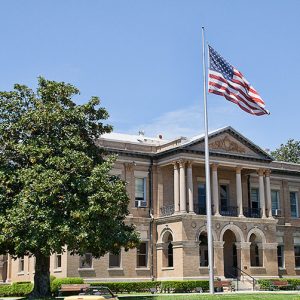 Columbia County Courthouse
Columbia County Courthouse  Columbia County Scrip
Columbia County Scrip  Columbia County Courthouse
Columbia County Courthouse 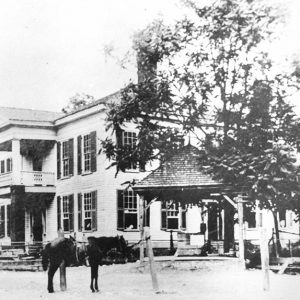 Columbia County Courthouse
Columbia County Courthouse  Columbia County Map
Columbia County Map  Thomas Dockery
Thomas Dockery 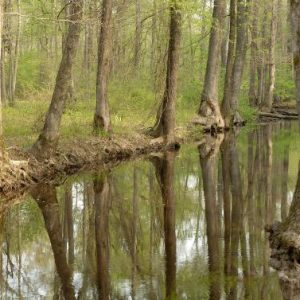 Falcon Bottoms Natural Area
Falcon Bottoms Natural Area 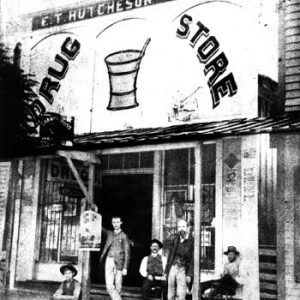 Hutcheson Drug Store
Hutcheson Drug Store  Travis Jackson
Travis Jackson  Logoly State Park Pier
Logoly State Park Pier 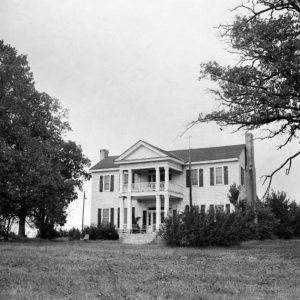 Magnolia Antebellum House
Magnolia Antebellum House  Magnolia Telephone Operator
Magnolia Telephone Operator 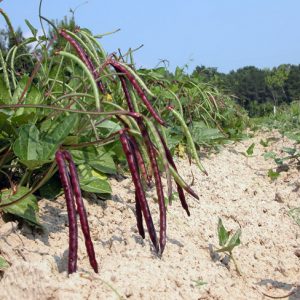 Purple Hull Peas
Purple Hull Peas  PurpleHull Pea Festival
PurpleHull Pea Festival  PurpleHull Pea Festival Tiller Race
PurpleHull Pea Festival Tiller Race 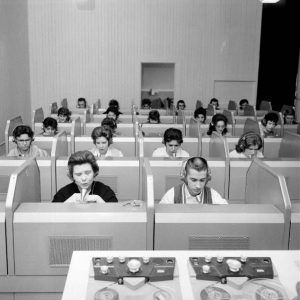 Southern State College Language Lab
Southern State College Language Lab  Waldo (Columbia County)
Waldo (Columbia County) 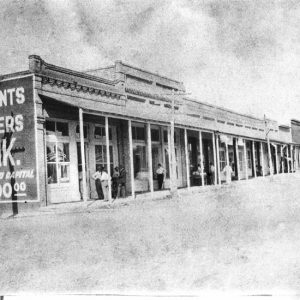 Waldo Street Scene
Waldo Street Scene 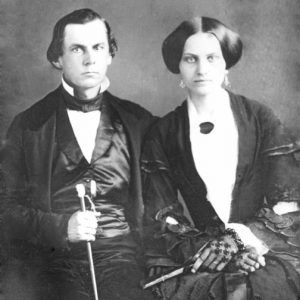 Norborn and Sarah Young
Norborn and Sarah Young 



Comments
No comments on this entry yet.